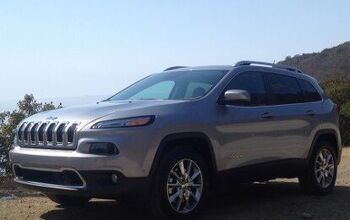Jeepers: Toledo South to Temporarily Halt Gladiator Production

The chips are down in Ohio, with semiconductor shortage reaching the factory floor where Jeep builds its Gladiator truck. According to reports, the Stellantis plant responsible for assembly of the lantern-jawed pickup, Toledo South, will halt the models’ production next week.
Wrangler production is not affected. For now.
“Stellantis continues to work closely with our suppliers to mitigate the manufacturing impacts caused by the various supply chain issues facing our industry,” a Stellantis spokesperson said in a statement to local media.
Beyond all the marketing doublespeak, it sounds like the company is allocating what chips it has on hand to vehicles that are in the most demand or making bank in terms of profit. While no one will suggest the Gladiator is an unprofitable vehicle, it does sell at a slower pace than the Wrangler. Given a choice, Jeep is wise to leave production of the latter uninterrupted. There are marked differences between the two machines but there are also vast similarities, leading us to rightly assume some parts (like certain semiconductors) can be transferred from one assembly line to the other in a bid to keep the place humming.
Jeep is hardly in this boat by itself, with most of the industry coping with the chip shortage in one way or another. Images of bare and barren dealer lots are easy to find online, with inventory problems becoming the bane of sales staff across the nation. Ford has even floated the idea of shipping unfinished trucks to dealers and having the chips installed by their techs; this is presumably in an effort to populate lots with something other than sailboat fuel. For the record, your author thinks this is a terrible idea – techs are already overworked, dealers may be tempted to let unfinished trucks slip out the door (especially if they’re floorplanning the things), and customers might scream bloody murder if they can’t have that truck out there right now.
Meanwhile, Stellantis CEO Carlos Tavares last week told the media his company expects the chip shortage to easily stretch into the 2022 calendar year. Demand created from the pandemic has led to a tight supply of things, a situation expected to cost the industry billions of dollars this year alone.
[Image: Jeep]

Matthew buys, sells, fixes, & races cars. As a human index of auto & auction knowledge, he is fond of making money and offering loud opinions.
More by Matthew Guy
Latest Car Reviews
Read moreLatest Product Reviews
Read moreRecent Comments
- 28-Cars-Later Ford reported it lost $132,000 for each of its 10,000 electric vehicles sold in the first quarter of 2024, according to CNN. The sales were down 20 percent from the first quarter of 2023 and would “drag down earnings for the company overall.”The losses include “hundreds of millions being spent on research and development of the next generation of EVs for Ford. Those investments are years away from paying off.” [if they ever are recouped, emphasis mine] Ford is the only major carmaker breaking out EV numbers by themselves. But other marques likely suffer similar losses. https://www.zerohedge.com/political/fords-120000-loss-vehicle-shows-california-ev-goals-are-impossible Given these facts, how did Tesla ever produce anything in volume let alone profit?
- AZFelix Let's forego all of this dilly-dallying with autonomous cars and cut right to the chase and the only real solution.
- Zelgadis Elantra NLine in Lava Orange. I will never buy a dirty dishwater car again. I need color in my life.
- Slavuta CX5 hands down. Only trunk space, where RAV4 is better.
- Kwik_Shift_Pro4X Oof 😣 for Tesla.https://www.naturalnews.com/2024-05-03-nhtsa-probes-tesla-recall-over-autopilot-concerns.html


































Comments
Join the conversation
Side note I saw my first working Gladiator the other day. Bed loaded with a pallet on vinyl windows in front of house getting resided. Saw it again later in the week with a load of trim on a ladder rack. Nice to see.
Yeah, I can’t see “chips” going in anyplace; it’s going to be modules. I certainly hope that SRS modules are finished at the factory! I don’t think I’d want to be the one to be the first to power those up on a daily basis! At least at the factory, the line worker applying battery power to a vehicle for the first time is at least outside the car, instead of in the vehicle with aforementioned claymores!